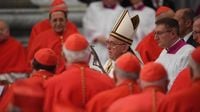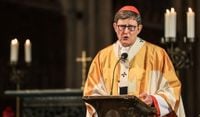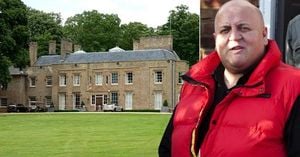Following the death of Pope Francis, the Catholic Church faces a significant transition as it prepares for the election of its next leader. With over 1.4 billion Catholics worldwide now without a pontiff, the process of selecting a successor is set in motion, steeped in tradition and solemnity.
Pope Francis passed away on Easter Monday at the age of 88, following a hospitalization for pneumonia just weeks earlier. His death marks the beginning of a period known as Sedisvakanz, or "vacant seat," during which the Church will not have a pope until a new one is elected. The election can occur relatively quickly or may extend over several weeks, depending on how the conclave of cardinals proceeds.
According to Catholic Church law, the Pope is the supreme leader of the Church, revered as the "Vicar of Jesus Christ" on Earth and the successor of Saint Peter. This authority is considered indivisible, meaning there is no official deputy to assume leadership during the interregnum.
The procedures following a papal death are meticulously orchestrated. The Camerlengo, or Cardinal Chamberlain, along with medical professionals, officially declares the pope deceased. Historically, this involved the Camerlengo gently tapping the deceased pope's forehead with a silver hammer and calling out his baptismal name, but modern practices have evolved. After the pope's death, his seal ring is removed and destroyed, and his private quarters are sealed.
The funeral rites for Pope Francis will take place within nine days of his passing, with the burial typically occurring four to six days afterward. While it has been customary for deceased popes to be interred in St. Peter's Basilica, it is anticipated that Francis will be laid to rest in Santa Maria Maggiore, a church he cherished.
As the Church mourns, the cardinals will prepare for the conclave, which must convene no later than 20 days after the pope's death. This gathering will take place in the Sistine Chapel, a location renowned for Michelangelo's frescoes. The term "conclave" derives from the Latin "cum clave," meaning "with keys," reflecting the seclusion of the cardinals as they deliberate.
Among the cardinals eligible to vote in the conclave are three Germans: Gerhard Ludwig Müller, Reinhard Marx, and Rainer Maria Woelki. None are considered likely candidates for the papacy, but their participation is significant in the electoral process. Müller, a prominent conservative voice within the Church, previously served as the Prefect of the Congregation for the Doctrine of the Faith, a position he held until 2017. He has been outspoken in his criticisms of Pope Francis's more progressive stances, particularly regarding the blessing of same-sex couples, which he labeled as heretical.
Reinhard Marx, the Archbishop of Munich, has also been a key figure in Church discussions, though he has faced scrutiny over his handling of sexual abuse cases within the Church. In 2021, he offered his resignation to Pope Francis, who declined to accept it, a move that reflects the complex dynamics within the Church's hierarchy.
Rainer Maria Woelki, the Archbishop of Cologne, has similarly been at the center of controversy, particularly regarding the declining number of Catholics in his diocese. Over 130,000 parishioners left the Church in Cologne between 2021 and 2023, a trend attributed in part to his management of abuse scandals. Despite these challenges, Woelki's position within the conservative faction of the German clergy offers him a degree of influence.
The conclave's voting process requires a two-thirds majority for a candidate to be elected as pope. If no candidate achieves this majority after 33 ballots, the cardinals may opt for a different voting method that allows for a simple majority. The process can be swift, as seen in 2013 when Pope Francis was elected after just 26 hours and five ballots, but it can also extend for weeks or even months, as was the case in the lengthy papal election of 1268.
Once a new pope is elected, he must accept the position before being proclaimed the head of the Roman Catholic Church. The announcement, traditionally made from the loggia of St. Peter's Basilica, is marked by the famous declaration "Habemus papam"—"We have a pope." The new pope will then impart his first apostolic blessing, known as "Urbi et Orbi," to the city of Rome and the world.
As the Catholic Church navigates this pivotal moment, the future direction under a new pope remains uncertain. The election will not only shape the Church's response to contemporary issues but will also reflect the ongoing tensions between progressive and conservative factions within the faith.
In the coming weeks, as the world watches, the conclave will convene, and the cardinals will engage in prayerful deliberation, seeking guidance as they prepare to elect the 267th pope. The outcome will undoubtedly have profound implications for the Church and its followers around the globe, as they await the emergence of new leadership in these challenging times.





